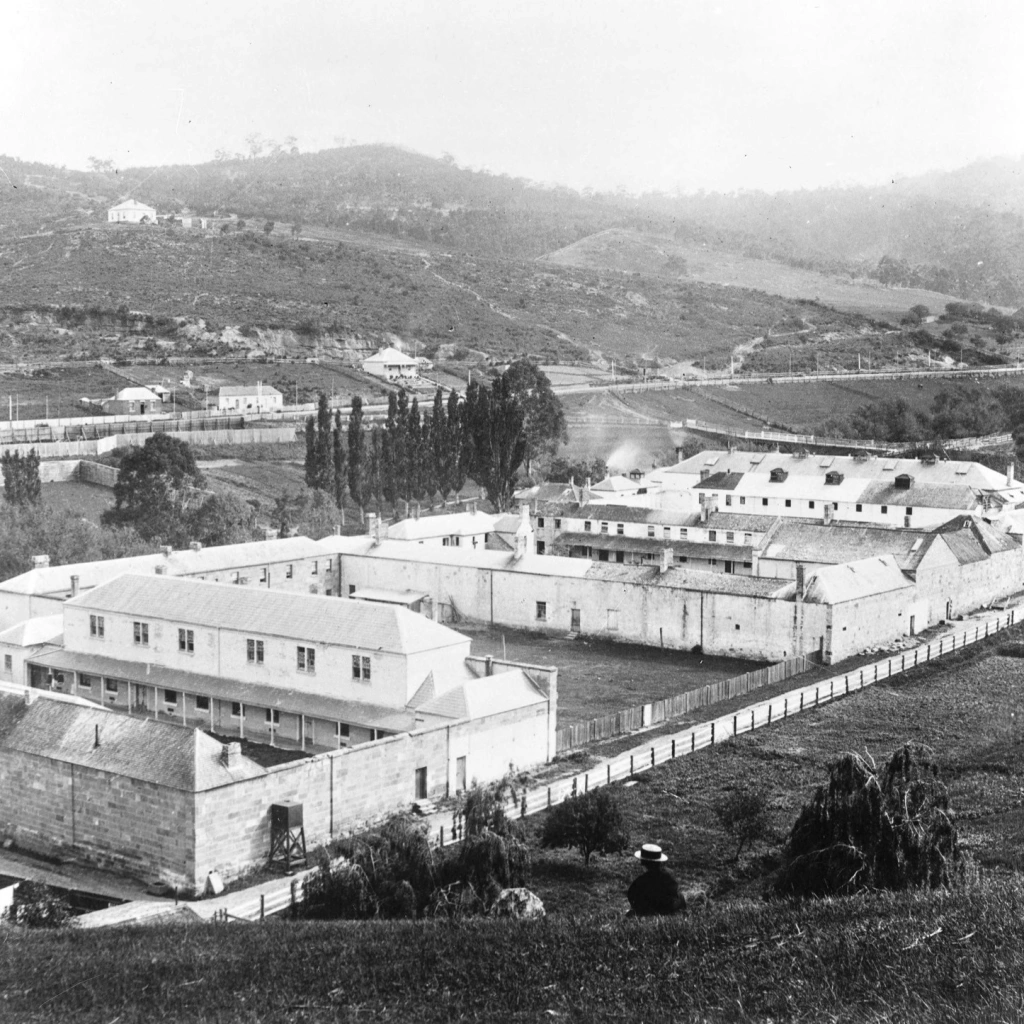Hidden in the shadows
Public art has been used in Hobart to reveal stories of female convicts that have been hidden in the shadows for decades.
The silence of history has been broken, and the layers of history have been peeled back to reveal a story of resilience and agency in the face of misery and hardship.
These stories have been commemorated in two sets of statues, one on the Hobart waterfront and one at the Cascades Female Factory in South Hobart, by Irish sculptor Rowan Gillespie.
Footsteps Towards Freedom (2017)
In 2017, the Footsteps Towards Freedom statues were installed on the Hobart waterfront and unveiled by the President of Ireland, Michael Higgins, and the Governor of Tasmania, Kate Warner.
The proposal was first mooted in 2015 when Hobart Lord Mayor Sue Hickey, the Speaker of the House of Assembly Elise Archer and the Governor of Tasmania met to discuss the project.
Irish sculptor Rowan Gillespie was commissioned to undertake the art installations. Dublin-based Gillespie is from a global community of bronze-casting sculptors and works from a foundry in County Clare in Ireland. He is one of the few who works on site-specific art installations and uses the lost wax casting process to portray human emotions where a metal sculpture is cast from an original.

The four statues that make up Footsteps Towards Freedom are located on Macquarie Wharf No. 1, where the convict women were taken off the ships.
The women were then walked up Macquarie Street to the Female Factory to await assignment or to be kept there if they were considered unassignable.
The Monuments Australia website states that Footsteps Towards Freedom is:
From 1803 to 1853, almost 13,000 convict women together with 2,000 children arrived in Van Diemen’s Land.
https://monumentaustralia.org.au/themes/landscape/settlement/display/112076-footsteps-towards-freedom
<pic 4 statues on Macquarie wharf Hobart>
The President of Ireland Michael Higgins said at the opening of the art installation:
These sculptures, let us remind ourselves, also make common cause with the suffering of migrants in our times. They should remind us that the trauma of displacement and forced exile are not experiences confined to our past, but are the lived experience of millions around the world today, including many who now call Australia home.
https://fromtheshadows.org.au



From the Shadows (2021)
Following on from the success of the Footsteps of Freedom project, the Governor of Tasmania, Kate Warner, launched the From the Shadows project at a reception at Government House in 2019.
In 2021, the Governor of Tasmania, Kate Warner, unveiled the first of two statues, one of a pregnant convict outside the Cascades Female Factory and the other in the factory yard.
The statues were designed and constructed by Irish sculptor Rowan Gillespie.

The Governor of Tasmania Kate Warner said at the opening of the first statue in 2021
The narrative of the pregnant convict woman highlights that there is much more to a convict life than a crime, a trial and sentence. The statue of the pregnant convict woman is evocative and challenging, and is designed to make those viewing her ask: who is she? why is she here? what became of her baby?
https://www.govhouse.tas.gov.au/sites/default/files/documents/2022-03/from_the_shadows_2021_.pdf

Cascades Female Factory
The Cascades Female Factory was one of a number of sites of reform and retribution of the British penal system in Van Diemen’s Land, where women could be hidden from their English masters.
Women of Irish, Scottish and Welsh descent and working-class English women from the northern counties.
If the factory walls could speak, they would tell harrowing tales of depravity, immorality and corruption. Decadence, sinfulness, perversion, degenerate, evil and wickedness for the upright church-going middle-class of colonial Hobart.
The female factory was opened at the Cascades from 1828 to 1856 at a time when women had few legal rights. The story of the female factory is one of women’s agency, resilience and perseverance in the face of incredible adversity and hardship. Hundreds of descendants in Tasmania point to these stories.
Now rebuilt with a new interpretative information centre, the female factory allows these stories to be told. Women’s stories and experiences at the female factory have been re-interpreted. Stories of trauma, queerness, loss and dispossession of children, and loss of identity.
The very fact of the isolation and desolation of the female factory did, in its own way, lead to enough remnants of the factory remaining on its original site to be able to resurrect the stories and experiences of the women experiences and stories.
Careful interpretation of the old and its remnants have produced a hauntingly real experience for visitors at a site of hardship and trauma for many women inmates.
The Cascades Female Factory website states that the
Cascades Female Factory Historic Site bears witness to the displacement, oppression and control of women in Tasmania. We honour their pain and loss, their courage and perseverance.
https://femalefactory.org.au/audioguide/

















You must be logged in to post a comment.